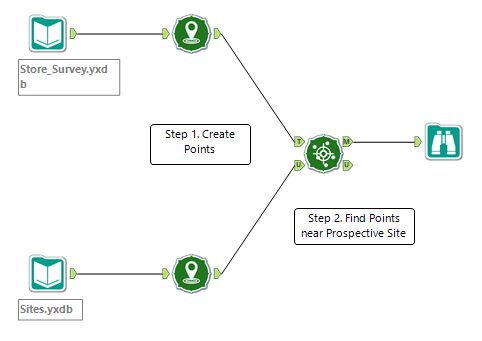Perhaps the oldest type of data on our planet are ancient maps. With geographical knowledge it was possible for our ancestors to derive directions or highlight points of interest, and this remains extremely useful TODAY. Read on for mapping application ideas featuring this week’s spatial data theme.
We immersed ourselves in geoanalytics by performing an accelerated catchment analysis in Alteryx. In the diagram, the postcodes of stores with high customer values are plotted against a list of potential opening sites. This identified the best locations to open a new store in less than 2 minutes! There are many other powerful tools available in Alteryx to calculate the distance between points, create radii, obtain all the information necessary to create polygons in Tableau, etc… the sky is the limit.
So how did we tackle mapping in Tableau? As self-tracking apps are popular, it was only natural to use Moves to gather our step count and analyze our own data. Preparing it on Alteryx involved extracting dates, time periods, and splitting spatial information (as shown below). During a 7 day period, it was possible for me to map a journey, compare the running total of distance travelled by different transport means, speed fluctuations and blend weather data. I believe this project would be extremely useful for a runner or sportsperson who would like to look at their training pattern in more detail.
Are you a graduate who is into self-tracking or quantified-self? The next Data School class will start in 118 days! Here is project to inspire you for application process, download Moves or Fitbit and try to calculate your carbon footprint.


